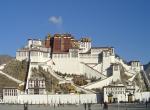Introduction
One of the significant developments in the country’s fast changing political scenario has been the rather premature demise of the much hyped 11 party Third Front. After the Jayalalithaa-led AIADMK dumped the alliance with the Left parties in Tamil Nadu within days of its announcement, other key constituents the Samajwadi Party, JD(U) and Left parties decided to contest the elections on their own in Uttar Pradesh, Bihar and other states sounding the death knell of the much-hyped initiative.
In the politically crucial Uttar Pradesh. differences arose between the SP and the CPI and CPM over seat sharing, with SP chief Mulayam Singh Yadav rigidly stating that his party would contest 78 of the 80 seats in UP.
While the CPI decided to field candidates in eight Lok Sabha seats, the CPM announced plans to contest two seats.
Meanwhile, addressing the JD(U) state executive committee in Lucknow on March 5, the party’s national president, Sharad Yadav, told state leaders not to have much expectations from the Third Front. In fact, he exhorted party leaders to prepare for the Lok Sabha elections and highlight the failures of the incumbent SP government in the state.
Further, going against the spirit of the non-Congress and non-BJP stance of the alliance, the SP Chief, who took the initiative for stitching the rag tag alliance this time, also decided not to field any candidates against either UPA Chairperson Sonia Gandhi or Congress Vice-President Rahul Gandhi in Amethi and Rae Bareli respectively.
Thus, as of now, in UP alone, the members of the Front will be locking horns in more than 24 Lok Sabha seats.
In a major loss of face in far away Kerala, after decades of being a steadfast ally of the four-party Left Democratic Front, the Revolutionary Socialist Party (RSP) left the CPM-led alliance to join the Congress-led United Democratic Front.
These developments prompted SP scion and UP Chief Minister Akhilesh Yadav to state that if at all such a front materialises, it could only be after the election results are out on May 16.
Joining issues, former CPI General Secretary AB Bardhan also admitted in a recent television interview that it was a mistake for the Left front to attempt to forge a third front alliance before the polls.
The proposed joint rally of the 11 non-Congress, non-BJP parties, which was to be held in Bangalore, has also been called off.
It was only on February 25 that top leaders of the Left, AIADMK, Samajwadi Party, Janata Dal (United) and JD(S) had met in Delhi to chalk out a common charter of programme. Speaking after the meeting, CPI(M) leader Prakash Karat had said 11 non-UPA, non-NDA parties will fight the upcoming Lok Sabha polls together to defeat the UPA and stop the BJP from coming to power.
Interestingly, the Third Front also did not have the support of either Trinamool Congress leader Mamata Banerjee, BSP Supremo Mayawati or BJD Chief Naveen Patnaik, all of whom are powerful satraps in their home states. In fact, Mamata is said to be toying with the idea of a Federal Front or a Fourth Front.
What’s more, the most visible critic of both the UPA and NDA, the Arvind Kejriwal led Aam Aadmi Party (which too had taken the outside support of the Congress during its 49 day Government in Delhi), too is not part of either of these alliances.
Backgrounder
Ahead of the last general elections, one saw former Prime Minister HD Deve Gowda taking the initiative for the formation of a Third Front with a massive rally in Karnataka, attended and addressed by several leaders including Prakash Karat, AB Bardhan, TDP Supremo Chandrababu Naidu and BSP’s Satish Chandra Mishra, besides representatives of the AIADMK and the Haryana Janhit Congress.
Ever an aspirant for the top post, the JD(S) supremo goaded all these parties to chalk out a ‘common minimum programme’ but failed to achieve any breakthrough. Mr Gowda was shocked to find that Uttar Pradesh Chief Minister Mayawati, who had become the rallying point for the new alternative, chose not to concede even a single seat in Uttar Pradesh for his close aide and party secretary general, Kunwar Danish Ali. What’s more, she decided to go it all alone in Karnataka, with her candidates contesting against several JD(S) nominees.
In Andhra Pradesh, the TRS rejected the former Prime Minister’s appeal to accommodate one of his party leaders. In Kerala too, where the Left and the JD(S) have had a historic relationship, the CPI(M) refused to yield important seats demanded by the latter, forcing senior party leader and veteran parliamentarian MP Veerendra Kumar to join forces with the Congress-led UDF.
But then, even as the results were trickling in, one saw the pathetic sight of Gowda’s son and former Chief Minister HD Kumaraswamy entering 10, Janpath, with his face covered, to extend his party’s unconditional support to UPA2. It was not long before that he had deserted the Congress to form a coalition Government in Karnataka with the BJP and later backed out in the name of “secularism”, when he had to hand over the chief ministership of the State to the BJP under the 20-month rotation agreement.
In statements bordering on bravado, ahead of the elections, CPI(M) leader Sitaram Yechury had discounted the possibility of its allies in the so-called Third Front embracing the Congress or the BJP after the Lok Sabha polls.
Yechury had then boasted that regional parties such as the AIADMK in Tamil Nadu and the JD(S) in Karnataka had teamed up with the Left because of pressure from their support base. This, he argued, would not allow them to go over to the BJP or the Congress after the April-May election — unlike in the past.
With the BSP and the JD(S) switching loyalties to the UPA and the TRS walking over to the NDA within days of the poll verdict, an embittered Yechury had to eat his words and state that the post-poll developments have proved that the “cut and paste” alliance was a mistake.
“You are right about BSP, JD(S) and TRS and that is precisely the point that I am making. Our decision is that it was neither credible nor viable and this (deserting the pre-poll alliance) only confirmed that”, the CPI (M) Politburo member said in a television interview.
Subsequently, one also saw the Samajwadi Party along with its arch rival from Uttar Pradesh, the Bahujan Samaj Party led by Kum Mayawati, who had projected herself as the Third Front’s Prime Ministerial candidate in the 2009 polls, together serving as crutches for the outgoing UPA Government after its key allies TMC and DMK walked out of the alliance.
But pushed to oblivion in West Bengal and Kerala, their traditional strongholds, and thereby finding itself on the fringes of national polity, the CPI(M) did not think twice before jumping on to the new Third Front bandwagon, the moment the wily SP leader invited them with his dulcet calls for the revival of the so-called front.
It is but natural therefore that the idea of the Third Front, envisaging a non-UPA, non-NDA alternative at the Centre, has come to be ridiculed by critics as an Utopian concept or at worst a seasonal frog (Barsati Maindak) which appears only during the polls.
The Case Against Third Front
If anti-Congressism was the politically correct stand from the mid-60s to late 80s interspersed with the failed experiments of Janata Party and the National Front coalitions, anti-BJPism laid the foundations of a third alternative. It became fashionable to maintain equidistance from both the Congress and BJP.
Yet, Mulayam Singh Yadav, the present Centre of gravity of the elusive Front, much like his other regional counterparts such as the DMK’s M Karunanidhi and JD(S) supremo Gowda, has always been known for practising the politics of opportunism of the worst kind.
Whether it be taking the help of the BJP to become the Chief Minister of Uttar Pradesh, entering into an alliance with Kalyan Singh (only to dump him later), opposing Sonia Gandhi’s foreign origin and then bailing out the UPA when the Left parties pulled the rug from under the ruling party’s feet, the wrestler-turned-politician has always taken advantage of the most unfavourable situations to turn the tide in his favour. Ideology, principles, norms, conventions, coalition dharma etc have all been like tissue paper for him to be used and thrown.
Reflective of double standards, over the years, anyone, including those who had worked closely with the BJP in the past, became secular once they distanced themselves from the saffron party. This so-called non-Congress, non-BJP Front had no qualms about seeking outside support from the Congress as was the case with the Deve Gowda and the IK Gujral Governments, even as they unashamedly claimed to be the third alternative, losing credibility in the eyes of the electorate. Besides, these Third Front Governments also heralded an innings of instability not to talk about their disastrous performance on all fronts. Most of their time was spent on managing the messy coalition and trying to somehow stick on to power.
With both the national parties realising that they cannot form Governments on their own strength, smaller parties in their quest for a place under the sun and to extract their pound of flesh started gravitating towards them, leading to the formation of the UPA and the NDA.
Even the parties which tried to maintain some semblance of neutrality entered into alliances with the two national parties both at the State and the Centre from time to time. From the ‘compulsions’ of running a State to living up to people’s aspirations and escaping the Damocles sword called CBI, these opportunist regional outfits found alibis galore to defend their alliance with the national parties.
With Jyoti Basu missing the prime ministerial bus in 1996 and the CPI(M) repenting at leisure, the Left parties, which have been at the forefront of the Third Front experiments in the past, too could not resist the temptation of wielding clout over Raisina Hill, when they extended outside support to UPA1, under the garb of “keeping communal powers at bay”.
Thus, the Third Front has come to be viewed as the last refuge for desperate power hungry regional satraps wanting to share the spoils of office at the Centre and extract their pound of flesh with the threat of withdrawal of support as their weapon of blackmail.
Conclusion
Except for the Left parties, all others are purely dynastic or personal enterprises, with no inner party democracy whatsoever. They have no principles, ideology, programmes or vision to offer to the people except hollow slogans of secularism, federalism and farmers’ rights – a key reason for their failure to provide a stable Government at the Centre despite umpteen opportunities to prove themselves in the past. The Third Front constituents as also the other Satraps are expected to switch loyalties to one or the other national alliances, once the results are out.
In the past too, wrangling for power and opportunism have been the hall marks of the short-lived Third Front regimes, which carried the seed of instability in their womb itself.
If the 1996 experiment was a flop show and the 2009 attempt a farce, the proposed 2014 Third Front show would be nothing but a fraud on the people of India.
As a political commentator aptly put it, “In the context of India’s politics, a Third Front signifies a group that stands apart from the Congress and BJP. However, by bringing together any one and every one regardless of their history, ideology or even program, who, for various reasons, is opposed to the Congress or the BJP, the core parties of the Indian Left, CPI and CPI(M), might as well be named the Communist Party of India (Electionist), which sums up their ideological and political bases.”
Published Date: 2nd April 2014, Image source: http://www.yugvani.com











Post new comment